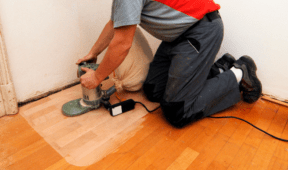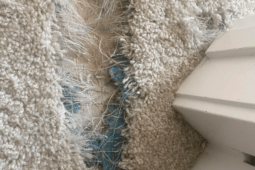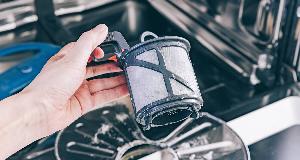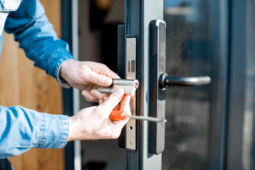How to: 5 Easy DIY Bicycle Tune-Ups Every Guy Should Know
A bicycle is an amazing machine. Easy to ride, but full of all sorts of moving parts that work together smoothly when everything is aligned, just so. As an active cyclist, I advocate for making friends with your local shop – they’ll likely give you basic adjustments for free. But there’s plenty of tune-ups you can do at home to keep things running smoothly, and save the trip.
 So, as riding season seems to finally be poking its head in and cyclists of all types are getting prepped to ride regularly, here are five easy tune-ups you can do to get your bike ready for spring.
So, as riding season seems to finally be poking its head in and cyclists of all types are getting prepped to ride regularly, here are five easy tune-ups you can do to get your bike ready for spring.
1. Check your tires and wheels. Tires are the thing that keeps you connected to the ground, so treat them well. Inspect your tires for any dryness or rot, and make sure there’s plenty of tread still left. Look at them head-on, and note the amount of tread left…the curvature and shape of the tire. Depending on your tires and terrain, you should be able to get anywhere from 1000 to 2,500 miles from a set. If things look a little bare, ride down to your shop and have a mechanic assess whether or when you need new tires.

If you’re good to go, fill ’em up! Ideally, you should do this anytime before a ride, so you don’t get as many flats. Just look on the side of your tire, and note the recommended PSI or number of bars to inflate. For road and street riding (as in, not mountain biking), fill ’em all the way up. I like to ride at just under 100. Investing in a good floor pump will save you tons of time, keeping the mini-pump for en route refills.
Lastly, inspect your wheelset and make sure everything is spinning nice and true. Check that all your spokes are intact. If your wheels are warped or you need a spoke replaced, have them fixed immediately. It’ll save you many headaches later. Fixing spokes can be fun, but for a casual rider, it might be worth paying your shop $15 for the job.
2. Square Up Your Frame, Handlebars, and Saddle. Straddle your bike, standing on the ground, and confirm that your handlebars are at 90° to your wheel. Turn the handlebars and check to see that full turns to the right and the left follow perfectly. Make any adjustments by loosening your stem (the part that connects your frame to your handlebars), aligning it, and then tightening it back on angle. Don’t skip this step – it’s super important for safe riding, and you’ll be surprised by how much things can move from ride to ride.

Lastly, check your saddle (seat) by sitting on it. You don’t want any shock absorption here: correct any front-to-back, side-to-side, or up-and-down movement by tightening the allen bolts. Trust me – this will help prevent any soreness in your tailbone or lower back.

3. Inspect Your Brakes. With your bike at rest, pull on the brake levers. You don’t want them to go all the way back (or down) to engage the wheel. While this can be a matter of preference, you want to stay in the middle zone, between 40 and 60% of their possible span, for safe breaking. So, tighten up the cables on the breaks to about 50%, then fine tune this on a ride.
Next, check your brake pads and make sure there’s still plenty of pad left. Confirm that your brake pads are stopping the wheel (the metal part), not the tire. If it needs adjusted, use a metric allen wrench to move the brake pad up or down.

Lastly, using just your fingers, confirm that the brake pads are compressing evenly on both sides of the wheel. This is also something to check before each ride, so that your not running either side of the wheel against the brake, making for unnecessary effort for you and wear on your bike.
4. Clean All Moving Parts [Especially Your Cassette] and Lube Your Chain. In order for your bike to run smoothly, you want as little resistance as possible. Use and old toothbrush or a special gear brush to remove any build up dirt, grime, leaves, and excess lube in your gear cassette. (Fixed gear bikes will only have one, obviously). Use a rag or chain cleaner to remove any crud or rust from your chain by running your pedals backwards.

If your chain has more than 2,000 miles on it, you’ll want to replace it. It’s akin getting your oil changed in your car, so don’t skimp. If you’re good to go, run the chain backwards, and drip a small, steady stream of lube (I like this teflon-based option) for one rotation only. As you ride more, you’ll want to re-lube your chain every 100 miles. Don’t use WD-40 for this, please. (Sorry, dad).
5. Learn How to Change a Tire on the Road. Flats are the worst, and while you can prevent them by filling up before each ride, sometimes, you’ll lose a tube in the middle of the ride… when you’re nowhere near your local shop or toolbox. For safety, I recommend that anyone who rides a bike should have both the knowledge and the equipment to replace a tire tube in the middle of nowhere…cause eventually, it’s gonna happen.
You’ll need: two tire levers, a mini pump and/or Co2 cartridge, and a spare tube (or two). That’s it, and they’ll fit into any saddle bag. Most bike shops will offer free hands-on courses for this, but here’s a quick video that shows you how:
Seriously…I mean it. Don’t get stranded, don’t have to call for someone for help, and don’t pay somebody $20 to fix it. It’s totally doable, safe, and you’ll feel like a master. The hardest part is seating and unseating the tire. And, like riding the bike itself, once you’ve done it once, you’ll never forget how.
This ManMade post was originally published in March 2013. We’re sharing again because it’s bike season!









